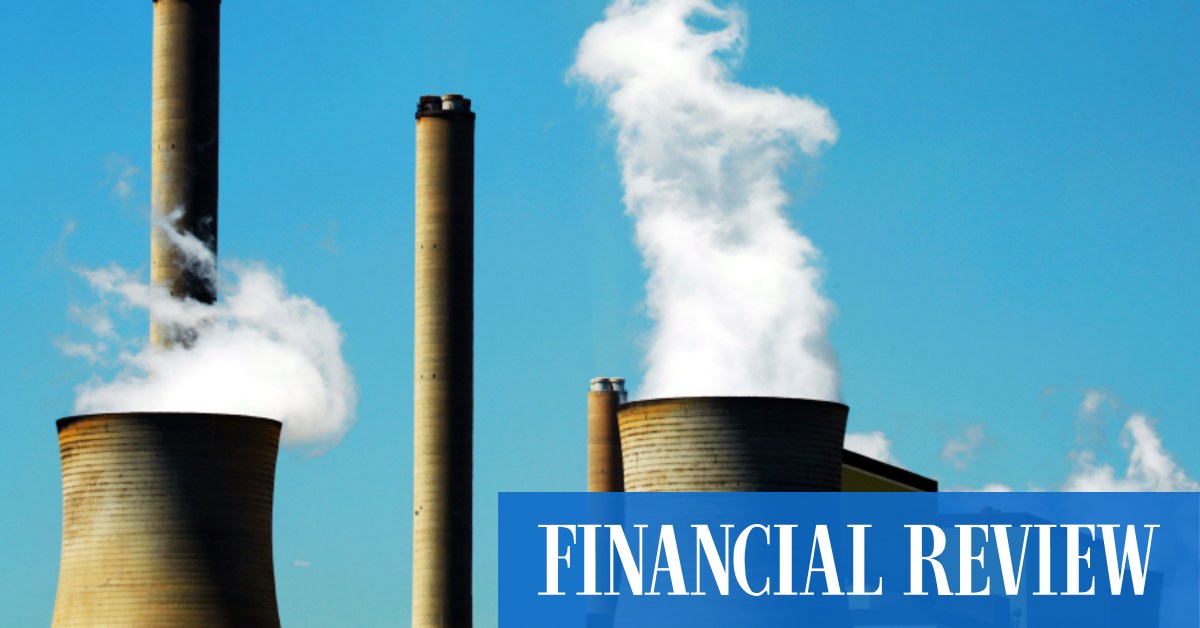
Wholesale electricity cap leads to generators withdrawing power capacity
This is, even so, noticeably below the wholesale expense of electric power and generators have responded by withdrawing offers of offer.
“What is taking place now is wild. If you are a fuel generator and have a marginal charge of generation of $400 or $500 then you really don’t want to lose revenue, so you will bid unavailable. Which is rational,” explained Dylan McConnell, exploration fellow at the University of Melbourne’s weather and electricity higher education.
“There is a payment system built as an incentive not to do that and AEMO reminded market place participants about this final week. It reminded them that it incorporates immediate and option costs. But turbines are doing this other thing, which is really problematic. They are withdrawing ability in get to be ordered on by AEMO.”
Mr McConnell stated the marketplace is far more common with this AEMO compensation package deal, and is calculated otherwise.
“It’s not immediate charges or possibility expenditures. It is based mostly on the 90th percentile of prices over the very last year, and turbines are appropriate now behaving in a way that will allow them to access that payment regime,” reported Mr McDonnell.
Uncertainty reins
The distinctive payment packages have stoked uncertainty in the market, leaving generators unsure about which is additional worthwhile.
There is also uncertainty about how AEMO will define possibility fees, deterring some to also withdraw capacity features.
Traders also pointed to clauses within just the policies that gives the Australian Electricity Marketplaces Fee the capacity to rewrite sections about compensation – stoking more uncertainty.
“There isn’t a large amount of certainty about how men and women are likely to get paid out, which usually means their behaviour is to withdraw themselves from the sector right up until a way comes” said Joshua Stabler, running director of power adviser Vitality Edge.
“We are in the depths of the guidelines, folks are looking at these parts of the policies for the very first time. The market has in no way seen this kind of condition before. Nobody wants to be the plant that will get paid out $300/MWh when it expenditures them $400/MWh. The individual who tends to make that final decision could get fired.”
Self-satisfying prophecy
Uncertain about how to carry on, the sector has responded by withdrawing sizeable volumes of potential that in switch heightens the threat of blackouts – albeit on paper.
“The forecast of blackouts is very artificial. Overnight about 3 gigawatts of capacity was withdrawn in NSW and 2 gigawatts in Victoria. The usual systems would undertaking shortfalls and blackouts. But the actuality is that capacity is just sitting down there, waiting to be directed on,” said Mr McConnell.
The withdrawal of ability will also increase the disaster.
Even though generators continue to withhold capability, the expense of wholesale electrical power is soaring powering the scenes.
This so-named shadow price is climbing and demonstrates minor indicator of falling under the Cumulative Price tag Threshold. As a outcome, the cap will remain for the forseeable long term, incentivising generators to carry on to withhold potential – proficiently getting to be a self-fulfilling prophecy.
“There is constrained incentive to act in a vogue that would enable the sector return to typical pricing, so plausibly this could be all around for up to 6 months,” said Mr Stabler.
